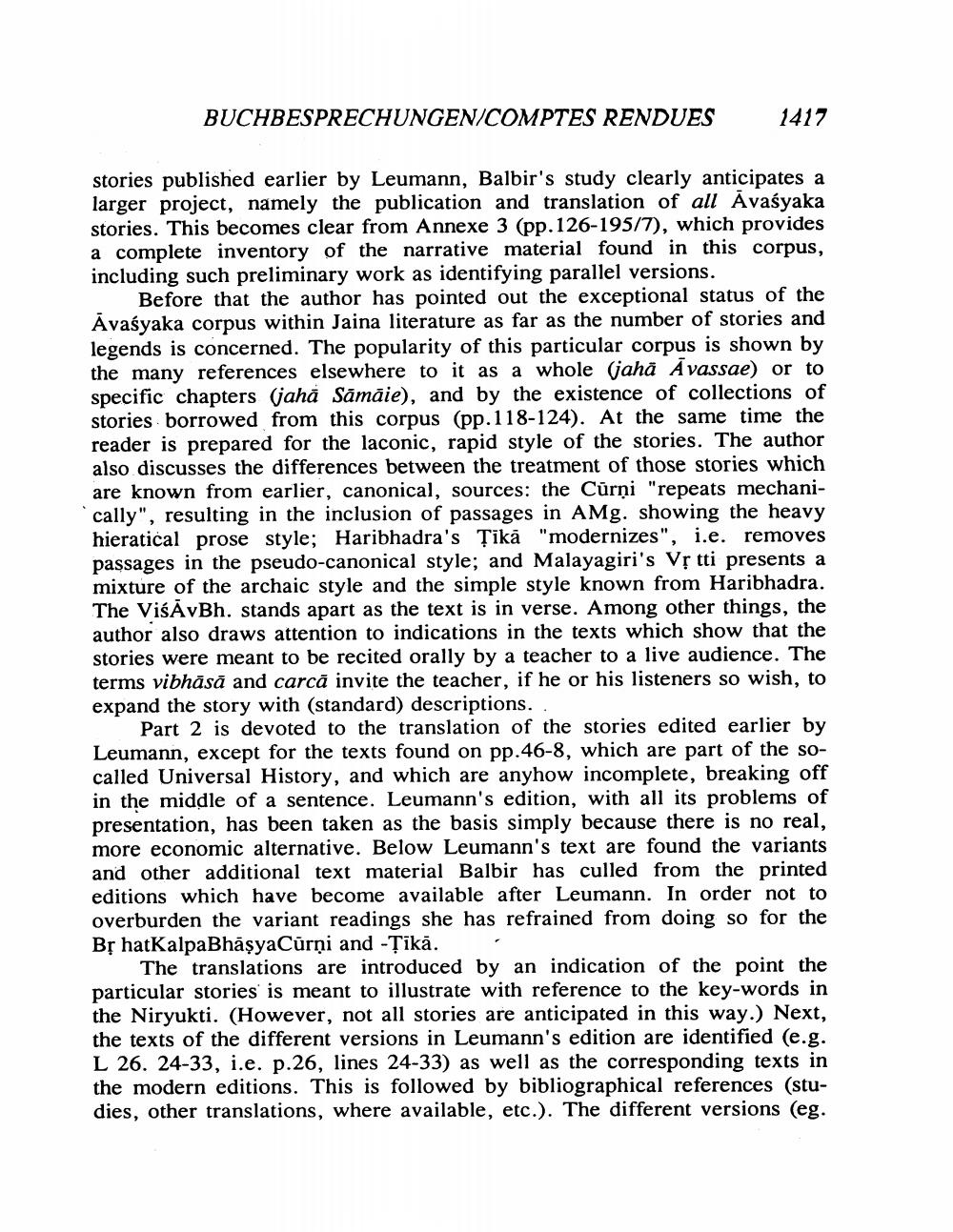________________
BUCHBESPRECHUNGEN/COMPTES RENDUES
1417
stories published earlier by Leumann, Balbir's study clearly anticipates a larger project, namely the publication and translation of all Avaśyaka stories. This becomes clear from Annexe 3 (pp. 126-195/7), which provides a complete inventory of the narrative material found in this corpus, including such preliminary work as identifying parallel versions.
Before that the author has pointed out the exceptional status of the Āvaśyaka corpus within Jaina literature as far as the number of stories and legends is concerned. The popularity of this particular corpus is shown by the many references elsewhere to it as a whole (jahā Āvassae) or to specific chapters (jahā Sāmāie), and by the existence of collections of stories borrowed from this corpus (pp. 118-124). At the same time the reader is prepared for the laconic, rapid style of the stories. The author also discusses the differences between the treatment of those stories which are known from earlier, canonical, sources: the Cūrņi "repeats mechanically", resulting in the inclusion of passages in Amg. showing the heavy hieratical prose style; Haribhadra's Țikā "modernizes", i.e. removes passages in the pseudo-canonical style; and Malayagiri's Vị tti presents a mixture of the archaic style and the simple style known from Haribhadra. The ViśĀvBh. stands apart as the text is in verse. Among other things, the author also draws attention to indications in the texts which show that the stories were meant to be recited orally by a teacher to a live audience. The terms vibhāsā and carcă invite the teacher, if he or his listeners so wish, to expand the story with (standard) descriptions..
Part 2 is devoted to the translation of the stories edited earlier by Leumann, except for the texts found on pp. 46-8, which are part of the socalled Universal History, and which are anyhow incomplete, breaking off in the middle of a sentence. Leumann's edition, with all its problems of presentation, has been taken as the basis simply because there is no real, more economic alternative. Below Leumann's text are found the variants and other additional text material Balbir has culled from the printed editions which have become available after Leumann. In order not to overburden the variant readings she has refrained from doing so for the BỊ hatKalpaBhāsyaCũrni and -Tikā. "
The translations are introduced by an indication of the point the particular stories is meant to illustrate with reference to the key-words in the Niryukti. (However, not all stories are anticipated in this way.) Next, the texts of the different versions in Leumann's edition are identified (e.g. L 26. 24-33, i.e. p.26, lines 24-33) as well as the corresponding texts in the modern editions. This is followed by bibliographical references (studies, other translations, where available, etc.). The different versions (eg.




